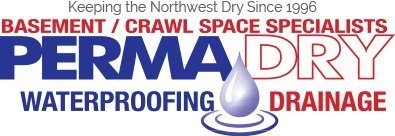Perma Dry Waterproofing Blog
Do you have water in your basement or crawl space? Is there mold or mildew affecting the air quality in your home? It's likely you need basement or crawl space drainage. Perma Dry offers a wide variety of common sense solutions to your wet basement or crawl space problems. Learn more here in our blog. When you're ready, give us a call and schedule an appointment.
Call for Inquiry
Send An Email
Get A Free Quote
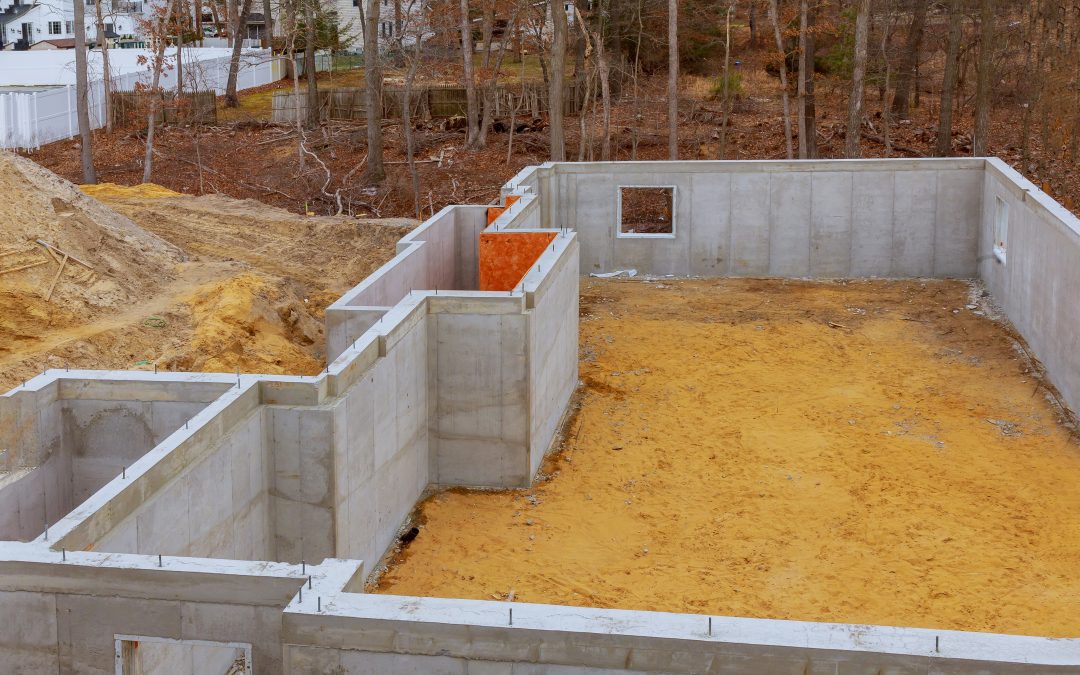
Foundation Leak Myths: Debunking Common Misconceptions
Picture this: you’re a homeowner in the beautiful southern part of the United States. The warm weather and charming architecture make it a delightful place to live. But amidst the charm, there can sometimes be lurking problems, like foundation leaks. That’s right, even in our neck of the woods, foundation leaks can cause havoc on our homes.
Understanding Foundation Leaks
Before we delve into debunking the myths and misconceptions surrounding foundation leaks, let’s first understand what exactly they are. Foundation leaks refer to the unwanted entry of water into the foundation of a home or building. These leaks can stem from various sources, such as cracks in the foundation walls, damaged drainage systems, or plumbing issues.
As homeowners, it’s important for us to be aware of the different types and potential causes of foundation leaks. Some common types include basement leaks, crawl space leaks, and slab leaks. Each requires a different approach when it comes to detection and repair.
Now, you might be wondering, why is it so crucial to address foundation leaks promptly? Let’s take a closer look.
Importance of Addressing Foundation Leaks Promptly
1. Negative consequences of untreated foundation leaks: Ignoring foundation leaks can lead to a myriad of problems. Excess moisture can not only weaken the structural integrity of your home’s foundation but also promote the growth of mold and mildew. These can potentially cause health issues for you and your family. Furthermore, water intrusion can damage your property’s insulation, electrical systems, and even valuable possessions.
2. Financial implications of ignoring foundation leaks: The longer you leave foundation leaks unaddressed, the costlier they become. Over time, water damage can worsen, leading to more extensive repairs. This means shelling out more money for remediation and restoration services. Additionally, if left unaddressed, foundation leaks can negatively impact the resale value of your home. Prospective buyers will be hesitant to invest in a property with a history of foundation issues.
Debunking Foundation Leak Myths
Now that we understand the importance of prompt action, let’s debunk some common myths surrounding foundation leaks.
Myth 1: Foundation leaks are only a problem in older homes. This couldn’t be further from the truth. While older homes may have a higher likelihood of foundation leaks due to wear and tear, even newer homes are not immune. Poor construction practices, soil settlement, and changes in weather patterns can all contribute to foundation leaks. Regardless of the age of your home, it’s crucial to stay vigilant and conduct regular inspections.
Myth 2: Foundation leaks are only caused by heavy rainfall. While heavy rainfall is indeed a common cause of foundation leaks, it’s not the only culprit. Other factors, such as improper drainage systems, faulty plumbing, and even tree roots can lead to water seepage into your foundation. It’s important to address these underlying issues to prevent future leaks. If you notice any signs of water intrusion, it’s best to consult a professional, such as Perma Dry Waterproofing, who specializes in foundation leak and crack repair to ensure a thorough assessment and effective solutions.
Myth 3: Foundation leaks can be easily fixed with DIY methods. When it comes to foundation leaks, it’s best not to take matters into your own hands. Diagnosing the exact cause and location of a leak requires expertise and specialized equipment. Moreover, the complexity of repairing foundation leaks often necessitates professional intervention. Hiring a qualified contractor with experience in foundation repair ensures a comprehensive solution that addresses the root cause of the issue.
Common Misconceptions about Foundation Leak Prevention
Now that we’ve debunked some foundation leak myths, let’s address common misconceptions about preventing foundation leaks.
Misconception 1: Waterproofing products can completely prevent foundation leaks. While waterproofing products can offer some level of protection against water intrusion, they are not foolproof. Moreover, they might not address underlying issues that contribute to foundation leaks, such as improper drainage or plumbing problems. Proper maintenance, including regular inspections and addressing any identified issues promptly, is vital in preventing foundation leaks.
Misconception 2: Foundation leaks can be prevented by only addressing visible signs. Foundation issues often manifest as visible signs, such as cracks in the walls or water seepage. However, solely focusing on these visible signs is not enough. Proactive measures, such as regular inspections and maintenance checks, can help identify potential problems before they escalate. It’s crucial to address any underlying issues to prevent foundation leaks.
Misconception 3: Foundation leaks are only a concern for homes located in flood-prone areas. While it’s true that homes in flood-prone areas are at a higher risk of foundation leaks, they are not the only ones affected. Even in non-flood-prone areas, factors like poor soil conditions, improper construction, or changes in water table levels can lead to foundation leaks. All homeowners should be proactive in understanding foundation leak prevention measures to protect their investment.
In conclusion, foundation leaks are a pressing concern for homeowners in the southern region and beyond. It’s important to debunk common myths and misconceptions surrounding this issue to ensure we take the necessary steps to prevent and address foundation leaks promptly. Remember, regular inspections, proactive maintenance, and seeking professional expertise when needed are key in preserving the integrity and value of our homes. So, let’s stay vigilant and protect our beloved southern abodes!

How Weather Impacts Foundation Leaks and Cracks
When it comes to maintaining a stable foundation, understanding the impact of weather is essential. Weather conditions can play a significant role in causing foundation problems such as leaks and cracks. By being aware of the factors that contribute to these issues and taking proactive measures, homeowners can protect their homes from potential damage.
The Role of Weather in Foundation Problems
Foundation issues caused by weather are a common concern for homeowners. The relationship between weather conditions and foundation integrity is a complex one. While foundations are designed to withstand a variety of environmental factors, certain weather conditions can exacerbate existing issues or even lead to new problems.
One of the key factors that make weather a contributing factor to foundation problems is soil composition and moisture absorption. Different soil types have varying abilities to retain moisture, and they react differently to various weather conditions. For example, clay soils have a high moisture retention capacity, making them vulnerable to swelling during periods of heavy rainfall, while sandy soils are prone to shifting and settling during droughts.
Temperature extremes also play a role in foundation stability. Freezing and thawing cycles can cause soil to expand and contract, putting pressure on foundation walls. On the other hand, heat and drought can cause the soil to shrink, leading to foundation settling.
Weather-Related Foundation Leaks
Excessive rainfall can be a significant cause of foundation leaks. When the ground becomes saturated with water, it can pool around the foundation, seeping into cracks and openings. Poor drainage systems can exacerbate this issue by allowing water to accumulate around the foundation, putting additional stress on its integrity.
In some cases, flooding can lead to hydrostatic pressure, which is the pressure exerted by a fluid at rest. Prolonged flooding can increase this pressure on foundation walls, potentially causing them to crack or bow inward.
Humidity and moisture issues can also contribute to foundation leaks. High humidity levels can increase the likelihood of moisture vapor transmission through foundations. This can lead to dampness and water intrusion. Installing vapor barriers can help prevent these moisture-related problems.
Condensation within the foundation can also cause deterioration over time. When warm, moist air comes into contact with cooler foundation walls, condensation may occur. This can lead to the deterioration of structural components if left untreated. Managing condensation and controlling indoor humidity levels can help minimize these issues.
Weather-Related Foundation Cracks
Freezing and thawing cycles can cause significant damage to foundation walls. The water in the soil expands when it freezes, putting pressure on the foundation. When the ice melts, the soil contracts, causing cracks to form. These freeze-thaw cycles can result in different types of cracks, including vertical, horizontal, or diagonal cracks.
Drought conditions and moisture deficit in the soil can also impact foundation stability. Lack of moisture in the soil can cause it to shrink, leading to settlement and cracking. Expansive soils, such as clay, are particularly vulnerable to drying out, which can result in foundation heaving and vertical movement.
By addressing these various factors, understanding the influence of weather conditions, and taking necessary precautions, homeowners can protect their foundations from leaks and cracks. Regular inspections, proper drainage systems, and moisture control measures can help mitigate potential weather-related damage.
For professional help in dealing with foundation leaks and cracks, you can rely on PermaDry Waterproofing. With their expertise in foundation repair and waterproofing, they can assist in assessing and resolving any issues you may be facing.
By being proactive and informed, homeowners can minimize the impact of weather on their foundations, ensuring the long-term stability and integrity of their homes.
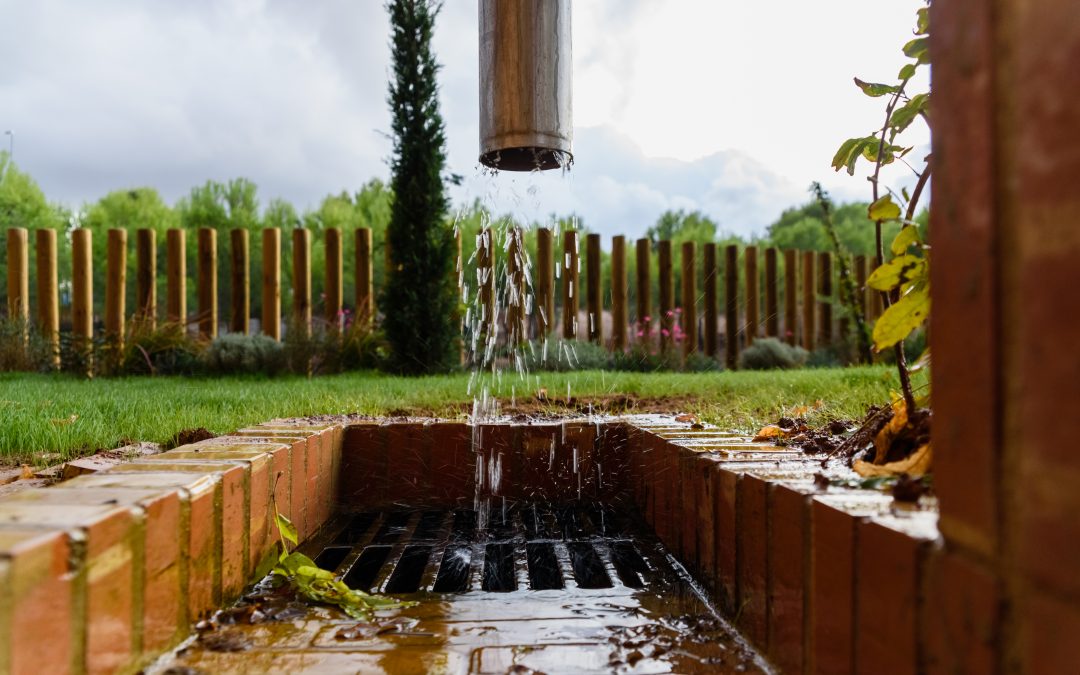
Crawlspace Waterproofing: Protecting Your Home from Water Damage
Oh, my dearest friends and esteemed readers, gather ’round as I regale you with a tale of utmost importance. Today, we delve into the profound realm of crawlspace waterproofing, a topic that, though often overlooked, holds the key to preserving the very foundations of our beloved southern abodes.
The Importance of Crawlspace Waterproofing
Now, you may be wondering, why, pray tell, is crawlspace waterproofing of such paramount significance? Allow me to impart unto you the wisdom forged in the fiery depths of experience.
Understanding the Risks of Water Damage
First and foremost, we must consider the dire effects that water damage can wreak upon the structural integrity of our cherished homes. Water seeping into the walls and foundation can weaken the very bones that support our dwellings, leading to sagging floors, warped walls, and other structural nightmares.
But alas, my dear compatriots, the hazards do not cease there. Oh no, for lurking amidst the dampness lies another peril – mold, that dreadful companion of water intrusions. As mold spores dance through the air with a mischievous glee, they may find solace in the dark recesses of our crawlspaces, multiplying with reckless abandon. And with this proliferation comes a cacophony of health risks, from respiratory issues to allergic reactions.
And let us not forget the burdensome toll that water damage can exact upon our wallets. The financial implications of repairing the aftermath of unaddressed water intrusions can be as heavy as a barrel of molasses. So, my dear friends, it is far wiser to invest in preventative measures rather than suffer the financial anguish of expensive repairs.
Recognizing Vulnerable Crawlspaces
Now that we stand united in the understanding of water damage’s malevolence, let us turn our attention to recognizing the vulnerable crawlspaces that lie beneath our feet.
By identifying common sources of water infiltration, such as leaky pipes, inadequate drainage, and poor soil grading, we can determine whether our crawlspaces are susceptible to the torment of water damage. For a moment, let us ponder upon the tales of past water-related travesties that have unfolded within these confined spaces – tales of dripping pipes, dank smells, and the relentless encroachments of moisture.
But fear not, for hope lies on the horizon, much like a glorious sunrise over the cotton fields. There exist methods and techniques, both exterior and interior, that can be employed to safeguard our crawlspaces from the clutches of water’s wrath.
Methods and Techniques for Crawlspace Waterproofing
Exterior Waterproofing Solutions
Ah, the exterior, the outermost shell that guards our homes from the world at large. Here, my friends, lies the first line of defense in our valiant quest for crawlspace waterproofing.
One such solution worthy of mention is the installation of appropriate drainage systems around the foundation. These systems, like the veins that course through our very bodies, redirect the flow of water, keeping it at bay and far from our precious crawlspaces.
But what of the exterior walls, you may ask? Fear not, for the answer lies within the realm of waterproof coatings. By adorning the exterior walls with these protective layers, we fortify our dwellings against the relentless assaults of moisture.
And let us not forget the importance of ensuring a proper seal against the insidious advances of soil moisture intrusion. By sealing our crawlspaces correctly, we can lock moisture away, much like the locks on a southern belle’s diary.
Interior Waterproofing Techniques
As we venture deeper into the heart of the crawlspace, we shall encounter a realm that requires our undivided attention: the interior. Here, my friends, lies another battlefield in our noble war against water damage.
One powerful technique in our arsenal is the installation of vapor barriers. These formidable shields prevent moisture evaporation, keeping our crawlspaces dry and free from the clutches of unwelcome dampness.
And what of water accumulation, you may ask? Well, fear not, for we have a trusty ally in the form of sump pumps. These mighty devices swoop in to control water accumulation, ensuring that our crawlspaces remain pristine and untainted.
But there is more, my friends, for insulation holds a vital role in our quest. By insulating pipes and HVAC systems, we minimize the risk of condensation, for condensation is but a gateway for water’s incursions into our sacred spaces.
Professional Waterproofing Services
Now, I must implore you, dear readers, to consider the expertise of those who have dedicated their lives to the art of waterproofing. Yes, I speak of the certified waterproofing contractors, masters of their craft, who possess the knowledge and skills to ensure the sanctity of our crawlspaces.
Within their repertoire lie specialized techniques, from encapsulation to the installation of French drains. These experts understand the intricacies of our crawlspaces, wielding their tools and wisdom to keep at bay the relentless deluge that seeks to invade our homes.
But, my friends, before embarking upon this endeavor, let us not forget the importance of evaluating the cost-benefit ratio of professional waterproofing. Assess your needs, consider your budget, and make an informed decision to protect your humble abode.
Maintaining a Dry and Healthy Crawlspace
Regular Inspection and Maintenance
As with all matters of the home, my friends, the key to success lies in diligence and regularity. By performing routine checks to detect signs of water damage, diligently removing debris, and maintaining proper drainage systems, we actively shield our crawlspaces from harm.
Should we encounter leaks or cracks, let us not turn a blind eye, for these small fissures may grow into mighty crevices, allowing water’s relentless surge into our crawlspaces. Inspect and repair promptly, dear readers, for procrastination in matters of water intrusion is an ally to naught but anguish.
Managing Humidity and Ventilation
Ah, humidity, that fickle friend of the southern atmosphere. Let us strive to manage its whims within our crawlspaces, my friends, for excessive moisture shall be our foe.
Monitor humidity levels diligently, for high humidity may well herald the arrival of water’s vile embrace. Proper ventilation, like a gentle breeze rustling through the magnolia trees, can reduce moisture buildup and keep our crawlspaces wondrously dry.
And should the need arise, my friends, do not hesitate to enlist a dehumidifier or fan, for they shall aid us in our quest, banishing the lingering oppressiveness of moisture that seeks to infiltrate our homes.
Additional Preventive Measures
As we approach the culmination of our journey, let me leave you with a few additional pearls of wisdom, dear readers. Divert roof runoff away from the foundation, for water’s descent from above should be guided far from our crawlspaces.
And let us not neglect the sacred ground that surrounds our crawlspaces, for proper grading ensures that water flows away, rather than towards our cherished abodes.
Lastly, should you witness water cascading from the heavens above, let not its force go unmatched. Install gutter systems, those humble sentinels that collect the rain’s bounty and guide it safely away from the foundations of our homes.
Signs of Potential Problems
And now, dear readers, as we near the end of our journey, I must impart upon you the knowledge to recognize signs of potential problems. For in doing so, we gain an upper hand in preempting water’s menacing advances.
Should you catch a whiff of musty odors or spy the telltale signs of mold growth, be swift in your actions, for water’s presence may lurk nearby, encroaching upon your sanctuary.
Increased energy bills may be a stealthy indicator of water’s infiltration, my friends. Inefficient HVAC systems strain under the weight of dampness, sapping away both comfort and coin.
Lastly, keep a watchful eye for cracks in the foundation or uneven floors, for these may signal water damage’s nefarious embrace, seeking to unsettle the very ground beneath your feet.
By following this comprehensive guide on crawlspace waterproofing, my dear readers, you can safeguard your home from water damage and the myriad of risks it brings. Take heed, be proactive, and invest in the well-being of your abode. Remember, prevention is far superior to the torment of water damage repairs.
And should you find yourself in need of professional assistance, do not hesitate to seek the wisdom of PermaDry Waterproofing. With their expertise and dedication, they shall guide you through the treacherous waters of crawlspace waterproofing, ensuring the longevity and security of your home. Visit PermaDry Waterproofing’s website for more information on their invaluable services.
Fare thee well, my fellow southern gentlemen and gentlewomen, and may your crawlspaces forever remain dry and delightful.
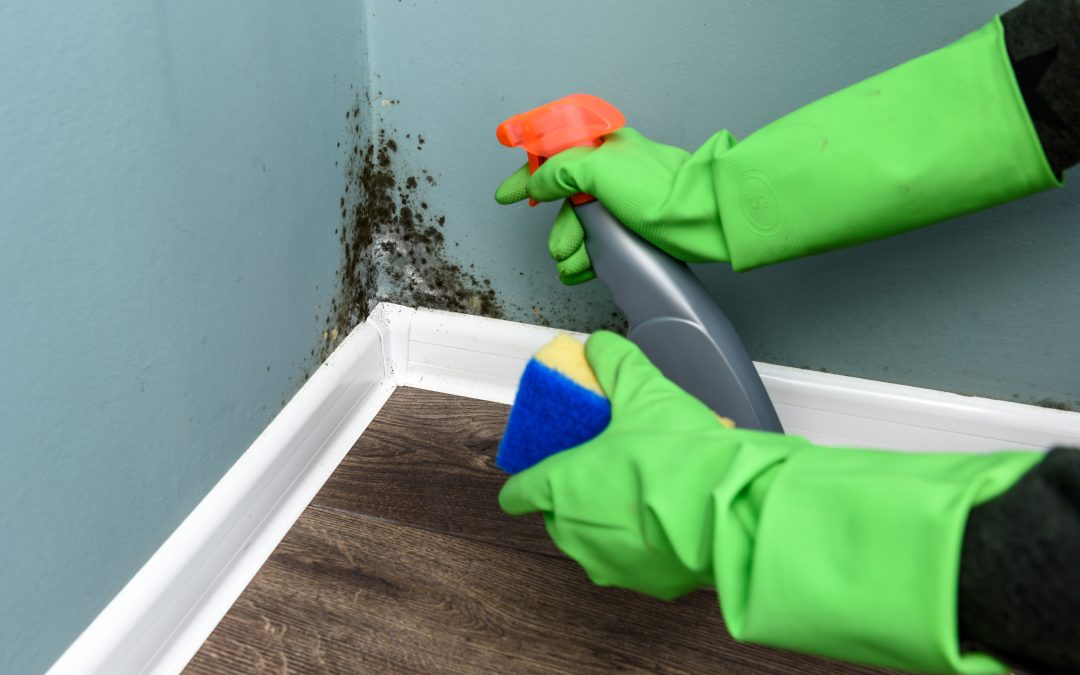
Humidity Control in the Basement: Your Defense Against Mold
Are you familiar with the impact of humidity on basements? Well, let me take you on a journey through the fascinating world of basement humidity control and the detrimental effects it can have on your home. Buckle up, my friend, and let’s dive right in!
The Role of Humidity in Basement Mold Growth
Have you ever wondered why basements seem to be more susceptible to mold growth? It all comes down to one pesky factor: humidity. Basements, being below ground level, tend to have higher moisture levels, which create a perfect breeding ground for mold. The connection between humidity and mold spores is undeniable – the higher the humidity, the more likely mold spores will thrive and multiply.
But why is mold such a concern? Well, besides being unsightly and giving off that musty odor, mold can pose serious health risks. Exposure to mold can lead to respiratory issues, allergies, and even pose a threat to those with weakened immune systems. Not to mention, the structural damage caused by excess moisture can weaken the integrity of your home’s foundation. It’s a double whammy!
Implementing Effective Basement Humidity Control Strategies
Now that we understand the impact of humidity on basements, the next logical question is: how can we control it? Fear not, my dear reader, for I have some effective strategies up my sleeve.
The first step in tackling basement humidity is to assess the current moisture levels. This can be achieved by using a trusty hygrometer, which measures humidity. Ideally, basements should have a humidity range of 30-50%. Anything above that is asking for trouble.
So, how do we reduce humidity in the basement? Improving ventilation and air circulation is key. Consider installing exhaust fans or vents to ensure proper airflow. Opening windows or using fans can also help in circulating the air and reducing moisture build-up. Remember, fresh air is your best friend when it comes to humidity control.
Repairing any leaks or water intrusion points is another crucial step. Inspect the foundation for cracks or gaps that could be allowing water to seep in. Fixing pipe or plumbing leaks is equally important, as even small drips can contribute to high humidity levels.
But sometimes, all these strategies may not be enough. That’s when dehumidifiers come to the rescue! Investing in a good dehumidifier specifically designed for basements can work wonders in removing excess moisture from the air. Make sure to choose one that is suitable for your basement size and place it strategically for maximum efficiency.
And remember, maintenance is key! Clean and replace air filters regularly, empty the dehumidifier’s water tank as needed, and keep an eye on any signs of moisture accumulation.
Other Preventive Measures for Basement Mold Control
Now that you have a good grip on basement humidity control, let’s explore some additional preventive measures to keep mold at bay.
Proper insulation is vital in preventing moisture and condensation in basements. There are various types of insulation suitable for basements, such as spray foam or foam board insulation. Insulating exterior walls and floors can minimize condensation and reduce the chances of mold growth.
Regular maintenance and cleaning routines are also essential in keeping your basement mold-free. Clean mold-prone areas with mold-inhibiting products, and regularly inspect and clean HVAC systems to prevent mold spores from spreading. Stay proactive, my friend!
And don’t forget to monitor and control basement moisture levels. Installing a sump pump can efficiently remove any water accumulation and prevent flooding disasters. Additionally, using moisture-resistant materials for walls and floors can further safeguard your basement from excess moisture.
Seeking Professional Help for Basement Humidity Control
While these strategies can work wonders, there may come a time when you need to call in the experts. When should you consider seeking professional help?
If you notice persistent mold growth or recurring humidity issues despite your best efforts, it may be time to consult a professional. They can assess the situation and provide specialized solutions tailored to your specific needs.
Hiring a professional humidity control service is not a decision to be taken lightly. Make sure to find reputable contractors experienced in basement moisture control. They can offer services such as moisture barrier installation, waterproofing, and other long-term solutions to keep your basement dry and mold-free.
The Long-term Benefits of Humidity Control in Basements
By now, you might be wondering if all this effort is worth it. Let me assure you, my friend, that basement humidity control has incredible long-term benefits that should not be overlooked.
First and foremost, humidity control prevents mold growth and improves indoor air quality. By reducing the chances of mold spores multiplying, you’re safeguarding your family’s health. Say goodbye to those pesky respiratory issues and allergies!
Eliminating musty odors and creating a fresh, pleasant environment is another perk. Your basement doesn’t have to be a damp and dreary place anymore. Embrace the newfound freshness!
Moreover, humidity control plays a crucial role in preserving the integrity and value of your home. Mold and excess moisture can lead to structural damage, compromising the stability of your foundation. By proactively addressing humidity issues, you’re effectively avoiding costly repairs and renovations down the line. It’s a win-win!
So, my dear reader, let’s take control of our basements and bid farewell to the reign of humidity. Implementing effective strategies, following preventive measures, and seeking professional help when needed will ensure a dry and mold-free space for you and your loved ones. Embrace the wonders of basement humidity control and let your home thrive! And don’t forget to check out Permadry Waterproofing for expert assistance in basement waterproofing. Stay dry, stay happy!
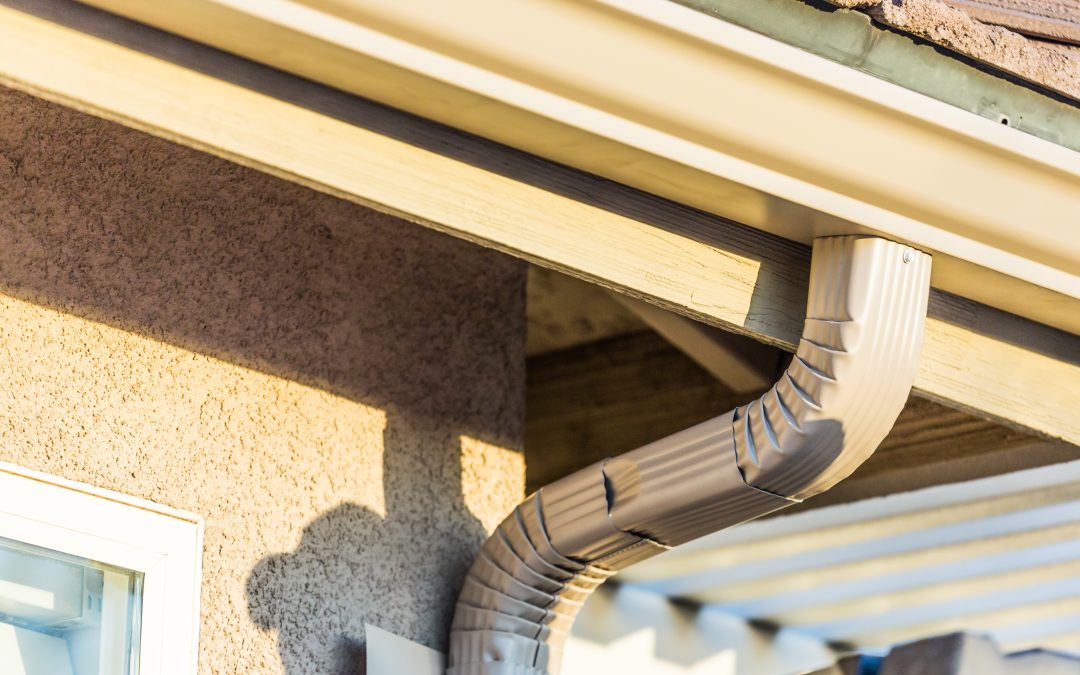
The Importance of Proper House Drainage: Protecting Your Investment
Proper house drainage is an essential aspect of maintaining the longevity and integrity of your home. Many homeowners may underestimate the significance of effective water management around their property, but failing to address drainage issues can lead to costly repairs and potential damage in the long run.
The Importance of Proper House Drainage
Why is drainage crucial for the longevity of your home? Well, there are several reasons.
Firstly, proper drainage helps prevent structural damage to the foundation. When water accumulates around the base of the house, it can seep into the foundation, causing it to weaken over time. This can lead to cracks, shifting, and various structural issues that can be expensive to fix.
Secondly, effective drainage minimizes the risk of basement flooding. Without proper water diversion, excess moisture can find its way into your basement, resulting in water damage, mold growth, and potential damage to your belongings. Nobody wants a damp and moldy basement, right?
Lastly, good drainage helps protect your landscaping and curb appeal. Excessive water pooling in your yard can drown your plants, cause soil erosion, and negatively impact the overall appearance of your property. Curb appeal is important, y’all!
Click here to learn more about basement waterproofing and how it can help you protect your home.
Now that we understand the significance of proper house drainage, let’s identify some common problems you may encounter.
Identifying Common Drainage Problems
Poor grading is one common issue homeowners face. This occurs when the slope of the land around your house is inadequate, directing water toward the foundation instead of away from it. Improper grading can lead to water pooling around the base of the house, which can cause a host of problems, as we’ve discussed earlier.
Clogged gutters and downspouts are another familiar problem. When leaves, debris, or even ice block the flow of water, your gutters can overflow, allowing water to seep into the walls and foundation of your home. This can result in water damage and further exacerbate drainage issues.
Another drainage problem may arise from inadequate or malfunctioning French drains. These drains are designed to divert excess water away from the foundation by collecting it in a perforated pipe and directing it elsewhere. However, if the French drain is insufficient or not properly maintained, water can accumulate around your house, causing potential damage.
Implementing Solutions for Effective House Drainage
Now that we’ve identified some common drainage problems, let’s discuss solutions to address them.
To ensure proper grading around your property, evaluate the slope and make any necessary adjustments. This may include adding or removing soil to create a gentle grade away from the foundation. Additionally, using appropriate landscaping techniques such as building small berms or installing retaining walls can aid in water runoff and prevent erosion.
Maintaining clean and functional gutters and downspouts is also crucial. Regular gutter cleaning to remove debris and blockages is necessary to ensure proper water flow. Installing gutter guards can further prevent debris buildup and protect your gutters from clogging, reducing the risk of water intrusion.
French drains play a vital role in managing excess water. If you have a French drain system, make sure it is appropriately installed and maintained. If you don’t have one but experience drainage issues, consult with a professional to determine if installing a French drain would be beneficial for your property.
In addition to these steps, there are other measures you can take for enhanced drainage. Consider installing surface drains in problem areas to redirect excess water. These drains can collect and channel water away from vulnerable zones. Using permeable materials for hardscape areas, such as driveways and walkways, allows water to seep through and be absorbed by the ground, rather than creating runoff that can contribute to drainage issues. Lastly, creating rain gardens can also help by collecting rainwater and allowing it to gradually absorb into the soil.
At times, tackling drainage issues may require professional assistance. If you find the problem to be beyond your capabilities, don’t hesitate to seek help from a landscape contractor or drainage specialist. For drainage-related issues that may impact your foundation, consulting with a foundation expert can provide valuable insights and recommendations.
By addressing the significance of proper house drainage, identifying common problems, and providing solutions for effective water management, homeowners can protect their investment and ensure the long-term integrity of their property.
Remember, y’all, water is a powerful force, and if not properly managed, it can cause significant damage and headaches. Take the necessary steps to maintain proper house drainage, and your home will thank you for it!
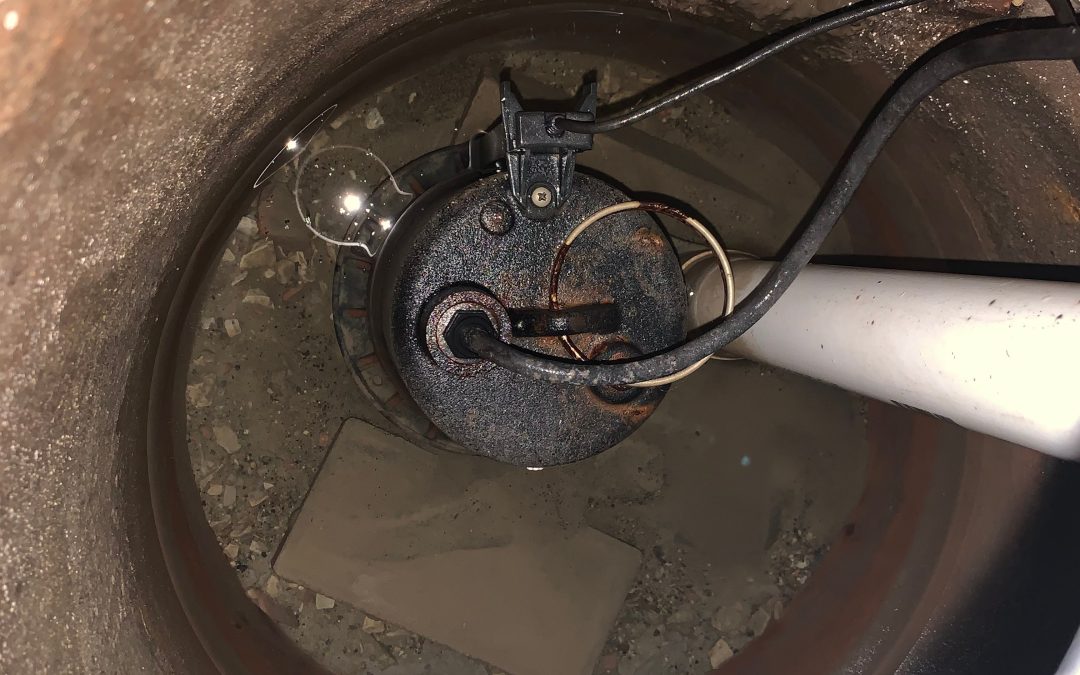
Sump Pumps: Your Last Line of Defense Against Basement Flooding
Basement flooding can be a nightmare for homeowners. When heavy rains or snowmelt occur, water can seep into the basement, causing damage to your property and posing health risks. Understanding the importance of sump pumps is crucial in preventing basement flooding and safeguarding your home.
The Basics of Basement Flooding
Basement flooding occurs when water finds its way into your basement through cracks in the foundation, improper drainage, or high water table levels. It can be triggered by heavy rainfall, melting snow, or even plumbing leaks. Whatever the cause, the results can be devastating.
In addition to the obvious damage to your belongings, basement flooding can lead to structural issues, mold growth, and electrical hazards. It’s a situation no homeowner wants to deal with.
Role of Sump Pumps in Basement Flood Prevention
One of the most effective tools in basement flood prevention is a sump pump. A sump pump is a device installed in the lowest part of the basement, typically in a sump pit, to collect and remove water. Its primary function is to pump water out and away from your home, keeping your basement dry.
Sump pumps work by automatically activating when the water level in the sump pit rises above a certain point. They then pump the water out through a discharge pipe, diverting it away from your foundation. It’s a proactive solution that can save you from the headaches and expenses associated with basement flooding.
Choosing the Right Sump Pump for Your Basement
When choosing a sump pump for your basement, it’s important to consider the size and layout of your basement, the water table level in your area, and the power source and backup options available to you.
Types of Sump Pumps
There are two main types of sump pumps: submersible sump pumps and pedestal sump pumps.
Submersible Sump Pumps
Submersible sump pumps are designed to be submerged in water. They are self-contained units and operate quietly. Submersible sump pumps are ideal for basements with limited space as they can be placed directly in the sump pit.
Pedestal Sump Pumps
Pedestal sump pumps, on the other hand, have the motor mounted above the sump pit. They are generally less expensive than submersible pumps but tend to be louder. Pedestal sump pumps are a good choice for larger basements as they offer easy access for maintenance and repairs.
Factors to Consider When Selecting a Sump Pump
In addition to choosing between submersible and pedestal sump pumps, there are several factors to consider when selecting a sump pump.
First, assess the size and layout of your basement. A larger basement may require a more powerful sump pump or multiple pumps to ensure adequate water removal.
Second, consider the water table level in your area. If you live in an area with a high water table, you may need a more powerful sump pump or additional backup options.
Last but not least, determine the power source and backup options available. Sump pumps should be equipped with backup batteries or a secondary power source to ensure they continue working during power outages.
By carefully considering these factors, you can choose the right sump pump for your basement.
Installing and Maintaining Your Sump Pump for Maximum Efficiency
Proper installation and maintenance are crucial in ensuring your sump pump functions optimally. Here are some guidelines to follow:
Proper Sump Pump Installation
When installing a sump pump, it’s important to select the right location for the sump pit. The pit should be located at the lowest point in the basement to ensure water flows into it naturally. Additionally, proper drainage and discharge systems should be in place to safely direct the pumped water away from the foundation.
Maintaining the Performance of Your Sump Pump
Regular maintenance is essential to keep your sump pump in working order. Here are some maintenance tasks to prioritize:
- Regularly clean the sump pit and remove any debris that may affect the operation of the pump.
- Test and inspect the float switches and valves to ensure they are functioning properly.
- Consider installing a battery backup system to keep your sump pump running during power outages.
By incorporating these maintenance tasks into your routine, you can maximize the efficiency and lifespan of your sump pump.
Signs of Sump Pump Malfunction and Troubleshooting Tips
Despite proper maintenance, sump pumps can occasionally experience malfunctions. It’s important to be aware of the signs and know how to address them:
- Unusual Noises or Vibrations: If your sump pump is making strange noises or vibrating excessively, it may indicate a mechanical issue. Check for any obstructions or loose components and consider contacting a professional if the problem persists.
- Frequent Pump Cycling or Continuous Running: If your sump pump is cycling on and off too frequently or running continuously, it may indicate a problem with the float switch or too much water entering the sump pit. Ensure that the float switch is properly adjusted and check for any leaks or excessive water flow.
- Addressing Common Issues: Common issues such as clogged discharge pipes, faulty switches, or power failures can also affect the performance of your sump pump. Check for any blockages, test the switches, and have a backup plan in case of power outages. Consulting a professional is advisable for complex issues.
Additional Measures to Enhance Basement Flood Protection
While sump pumps are essential in preventing basement flooding, there are additional measures you can take to further enhance flood protection:
Exterior Waterproofing and Drainage Solutions
Investing in proper exterior waterproofing and drainage solutions can help minimize the risk of basement flooding. Foundation maintenance and repair, as well as proper landscaping and grading strategies, can divert water away from your home and protect your basement.
Interior Waterproofing Methods
Interior waterproofing methods, such as installing French drains or interior drainage systems, can provide an extra layer of protection. Additionally, sealants and waterproofing paints can help keep your basement walls dry.
Insurance Coverage for Basement Flooding
It’s also important to understand your homeowner’s insurance policies and the coverage they provide for basement flooding. Some policies may not include coverage for flooding, necessitating the purchase of additional flood insurance. Be aware of your insurance coverage to ensure you are adequately protected.
Tips for Emergency Preparedness
While prevention is key, it’s always wise to be prepared for emergencies. Here are some tips for emergency preparedness:
Creating an Emergency Flood Plan
Take the time to create an emergency flood plan for your family. This plan should include familiarizing yourself with the location of shut-off valves and designating a safe evacuation route. Being prepared can help you react quickly during a crisis.
Maintaining Emergency Supplies and Equipment
In case of a power failure or sump pump malfunction, it is advisable to have emergency supplies and equipment on hand. Consider investing in a battery-powered sump pump backup system and stocking up on essential safety gear such as flashlights, batteries, and waterproof clothing.
Conclusion
In conclusion, understanding the importance of sump pumps is vital in protecting your home from basement flooding. By selecting, installing, and maintaining a sump pump, you can greatly reduce the risk of costly water damage, mold growth, and other related problems. Additionally, taking additional measures such as exterior and interior waterproofing, understanding your insurance coverage, and being prepared for emergencies further enhances your basement flood protection. So, don’t overlook the value of comprehensive flood prevention measures, and be sure to choose the right sump pump for your basement needs.
For more information about basement waterproofing and flood prevention, please visit PermaDry Waterproofing.
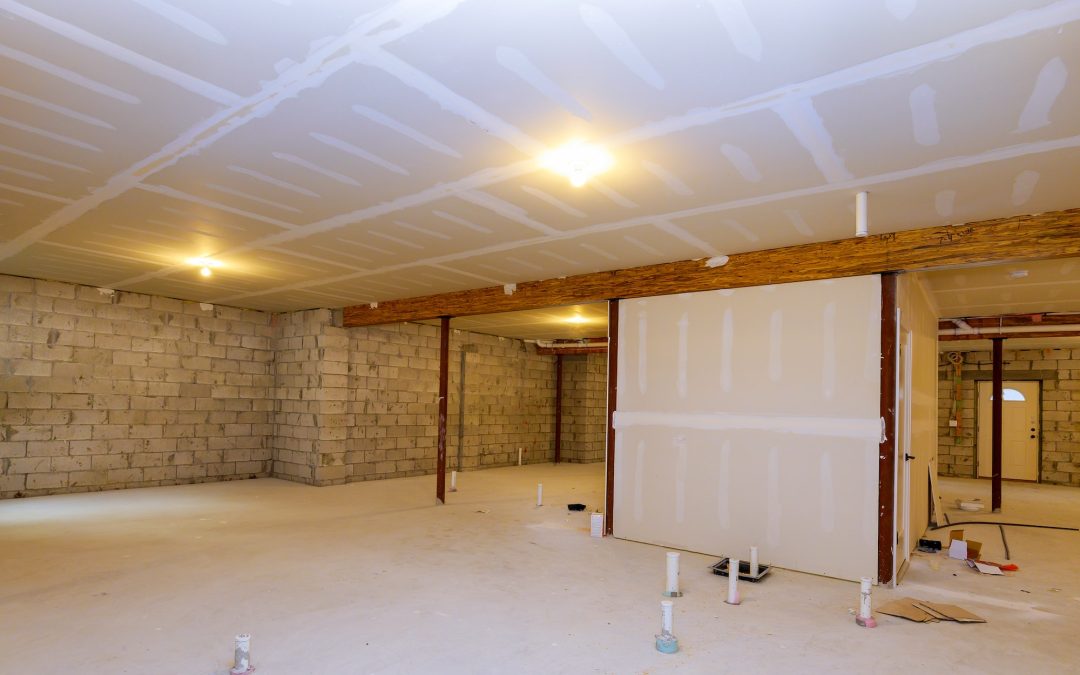
Understanding French Drains for Basement Drainage
Homeowners have been dealing with wet basements for centuries. The biggest issue is that the water has to go somewhere. One of the most effective solutions is to install a French drain. French drains are an important part of a basement drainage system, as they provide a place for water to be diverted away from a home’s foundation.
What is a French Drain?
A French drain is a trench filled with gravel and a perforated pipe that is used to divert water away from an area. The perforated pipe allows water to flow into it and the gravel stores the water until it can be diverted away from the area. French drains can be used to divert water away from a home’s foundation, a patio, or any other area that is prone to flooding.
French drains are typically installed in trenches that are 6-8 inches deep and 8-10 inches wide. The depth and width of the trench can vary depending on the amount of water that needs to be diverted, the slope of the land, and other factors.
How Does a French Drain Work?
French drains are designed to divert water away from an area by using gravity. The water is diverted away from the area by the flow of the water. The water flows into the perforated pipe and is then diverted away from the area. The gravel in the trench helps to store the water and prevents it from overflowing.
The water is diverted away from the area by the force of gravity. The water flows down the trench and into the perforated pipe. The pipe is perforated with holes, which allows the water to flow through the pipe and be diverted away from the area. The gravel in the trench helps to store the water and prevents it from overflowing.
Advantages of Installing a French Drain
- It is an inexpensive solution to drainage problems.
- It is easy to install and maintain.
- It can divert large amounts of water away from an area.
- It is a long-term solution to drainage problems.
Installing a French drain is a great way to keep water away from your home’s foundation and other areas of your property. It is an inexpensive solution that is easy to install and maintain. French drains can also be used to divert large amounts of water away from an area, making it a long-term solution to drainage problems.
How to Install a French Drain
Installing a French drain is relatively easy and can be done by most homeowners. The first step is to dig a trench that is 6-8 inches deep and 8-10 inches wide. The depth and width of the trench can vary depending on the amount of water that needs to be diverted, the slope of the land, and other factors.
Once the trench is dug, the next step is to fill the trench with gravel. The gravel should be placed in the trench until it is level with the ground. The gravel should be packed firmly in the trench to ensure that the water can flow through it. The gravel should be covered with a layer of filter fabric to prevent soil and debris from entering the pipe.
Once the gravel is in place, the next step is to install the perforated pipe. The pipe should be laid in the trench and connected to the drainage system. The pipe should be covered with the remaining gravel and then covered with soil. The soil should be packed firmly to ensure that the pipe is secure and that the water can flow freely through it.
Conclusion
French drains are an effective and affordable solution for basement drainage. They provide a place for water to be diverted away from a home’s foundation and other areas of your property. Installing a French drain is relatively easy and can be done by most homeowners. For more information on French Drains and other basement drainage solutions, visit PermaDry Waterproofing.

Understanding the Role of Waterproof Coatings in Basement Protection
Basement protection is an important part of home maintenance and waterproof coatings are key to ensuring your basement is protected from water damage. Waterproof coatings provide a layer of protection between the basement walls and the outside elements, protecting your home from water damage and potential mold and mildew growth.
Basements are particularly vulnerable to water damage, as they are often located in low-lying areas of the home and can be prone to flooding. Waterproof coatings can help prevent water from seeping through the walls of your home, and protect the basement from moisture, mold, and mildew.
Types of Waterproof Coatings
There are a variety of waterproof coatings available for basement walls, each with their own advantages and disadvantages. The most common types of waterproof coatings are:
- Polyurethane coatings
- Bituminous coatings
- Acrylic coatings
- Fiberglass coatings
Polyurethane coatings are the most effective type of waterproof coating, as they provide a thick, durable layer of protection against water infiltration. These coatings are applied in liquid form, and they expand and harden when they come into contact with water. Bituminous coatings are also effective at preventing water infiltration, but they can be expensive and difficult to apply.
Acrylic coatings are less durable than polyurethane coatings, but they are less expensive and require less maintenance. Fiberglass coatings are the least durable of the waterproof coatings, but are still effective in preventing water infiltration. They are also easy to apply and require less maintenance than the other types of waterproof coatings.
Benefits of Waterproof Coatings
Waterproof coatings can provide a number of benefits, including:
- Reducing the risk of water damage
- Preventing mold and mildew growth
- Reducing energy costs by increasing insulation
- Improving the aesthetic value of your home
Waterproof coatings can help protect your basement from water damage, which can lead to costly repairs. They also help to prevent mold and mildew growth, which can cause health issues for your family. Additionally, waterproof coatings can improve the insulation of your home, which can help to reduce energy costs.
Finally, waterproof coatings can also improve the aesthetic value of your home. Basements are often the least attractive part of a home, but waterproof coatings can help to make your basement look more attractive and inviting.
How to Apply Waterproof Coatings
Applying waterproof coatings to your basement walls is a relatively simple process. Most coatings come in liquid form, and are applied with a brush or roller. It is important to make sure that the area is clean and dry before applying the coating, as any moisture or dirt can interfere with the adhesion of the coating.
Once the area is clean, the coating can be applied in thin layers, and allowed to dry before the next layer is applied. Depending on the type of coating, the process may take several hours or days. Once the coating is completely dry, it can be inspected for any cracks or gaps, and any necessary repairs can be performed.
The Importance of Professional Installation
It is important to hire a professional contractor to install waterproof coatings in your basement. They will be able to properly inspect the area and make any necessary repairs. They can also advice you on the best type of coating for your basement, and make sure that the coating is applied correctly.
Professional installation of waterproof coatings can help to ensure that your basement is properly protected from water damage. Additionally, it can help to reduce the risk of mold and mildew growth, and save you money on energy costs. For more information on waterproof coatings and basement protection, contact Perma-Dry Waterproofing.
{END ARTICLE – HTML MARKUP – 1000 WORD MINIMUM}
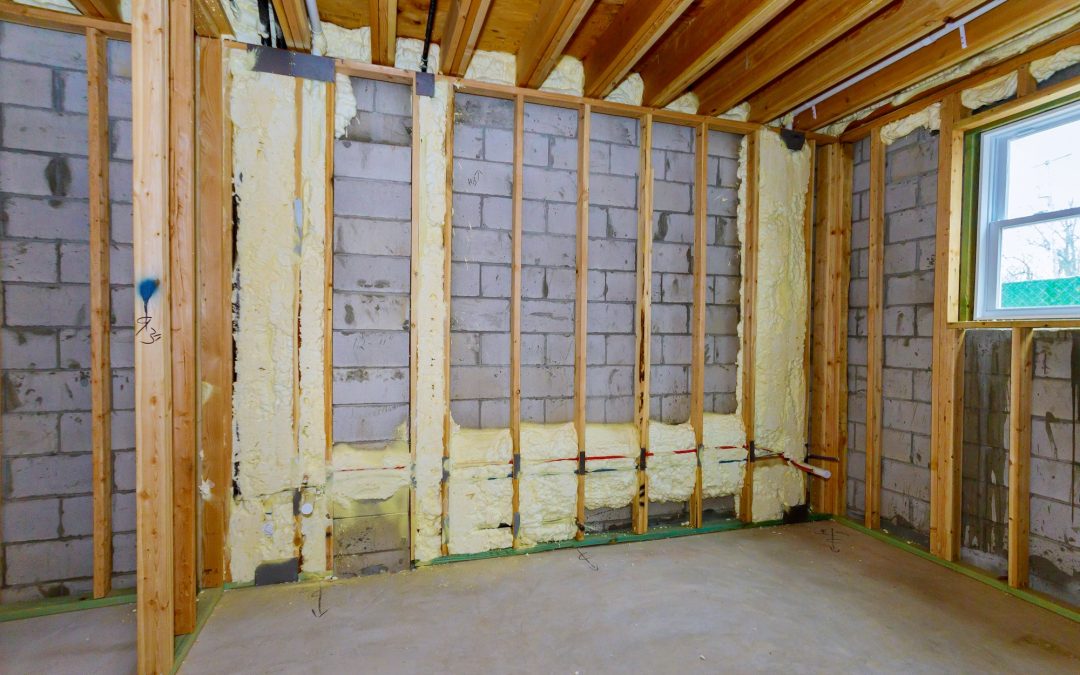
Common Causes of Basement Water Damage and How to Prevent Them
Basement water damage is a common problem for homeowners. This is due to the fact that basements are often subject to flooding from natural causes, such as heavy rains and snowmelt. Additionally, basements are at risk of water damage caused by plumbing issues, such as leaking pipes or water heaters. In any case, it’s important to identify the source of the problem and develop an action plan to prevent it from happening again.
Flooding from Heavy Rains
One of the most common causes of basement water damage is flooding from heavy rains. If your home is located in an area that receives a lot of rainfall, it’s important to make sure your basement is well protected from potential flooding. This can be done by installing a sump pump, which will help pump out any excess water that may enter the basement. Additionally, waterproofing the basement walls and floors can help keep water from seeping in. If waterproofing isn’t an option, installing a backflow valve can help prevent water from entering the basement.
If your home is already experiencing flooding from heavy rains, there are steps you can take to minimize the damage. For instance, it’s important to remove any furniture or other items from the basement that could be damaged by water. Additionally, using a wet-dry vacuum can help remove standing water, and using dehumidifiers can help get rid of excess moisture.
Plumbing Issues
Another common cause of basement water damage is plumbing issues. Leaks from pipes or water heaters can cause water to enter the basement, leading to costly repairs. It’s important to keep an eye out for signs of plumbing issues, such as a damp spot on the floor or walls, or a musty smell. If you notice any of these signs, it’s important to contact a plumber right away to help identify the source of the problem.
Once the source of the leak has been identified, it’s important to take action to prevent further damage. For instance, if the leak is coming from a pipe, it’s important to replace it as soon as possible. If the leak is coming from a water heater, it’s important to have it serviced and inspected regularly to ensure it is in good working condition.
Cracks or Gaps in the Foundation
Cracks or gaps in the foundation are another common cause of basement water damage. These can be caused by changes in the soil or temperature, or from foundation settling over time. It’s important to inspect your basement regularly for any signs of cracks or gaps, and to contact a professional to help seal them if necessary.
If you do find cracks or gaps in the foundation, it’s important to take action to prevent them from getting worse. To do this, you’ll need to make sure that the soil around your home is properly graded so that water can’t pool around the foundation. Additionally, it’s important to insulate the basement to help keep the temperature constant.
Prevention Tips
While basement water damage can be a major issue, there are steps you can take to prevent it from happening in the first place. Here are a few tips to help keep your basement safe from water damage:
- Install a sump pump to help remove excess water.
- Waterproof the basement walls and floors.
- Install a backflow valve to prevent water from entering the basement.
- Inspect the basement regularly for signs of plumbing issues.
- Have your water heater serviced and inspected regularly.
- Check for any cracks or gaps in the foundation, and seal them if necessary.
- Make sure the soil around your home is properly graded.
- Insulate the basement to help keep the temperature constant.
By taking the necessary steps to prevent basement water damage, you can help keep your home safe and dry. If you’re looking for more information about how to protect your basement from water damage, Perma-Dry Waterproofing can help. They offer a variety of services to help protect your basement from water damage, including waterproofing and insulation.
By taking the necessary steps, you can help protect your home from costly water damage. If you’re looking for more information, contact Perma-Dry Waterproofing today to learn more about how they can help.
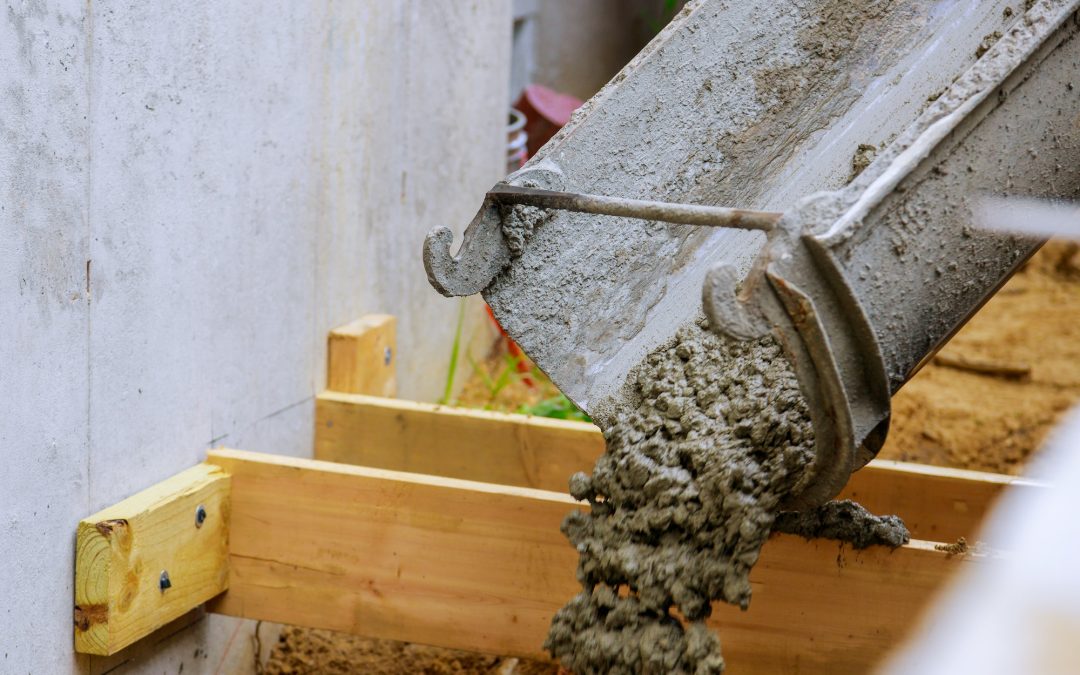
The Role of Gutters and Downspouts in Basement Waterproofing
Basement waterproofing is an important step in keeping a home’s structural integrity and protecting against damage from water. It’s important to understand the role gutters and downspouts play in basement waterproofing and how they help keep your basement dry.
The Role of Gutters
Gutters are an important part of your home’s exterior. They are designed to collect rain water and direct it away from your home’s foundation. Without gutters, rain water can pool around your home’s foundation and cause water damage. Gutters also help to protect your siding, windows, and doors from water damage. In addition, gutters can also help protect your basement from water damage.
If your gutters become clogged with leaves, dirt, and debris, the water can’t flow freely and can back up into your basement. When this happens, basement waterproofing becomes more difficult. It’s important to keep your gutters clean and free of debris to ensure that your basement stays dry.
The Role of Downspouts
Downspouts are an extension of your gutter system and are designed to direct the water away from your home’s foundation. Without downspouts, rain water can pool around your foundation and cause water damage. Downspouts are an important part of basement waterproofing and should be installed properly.
If your downspouts are not installed correctly, the water can’t be directed away from your home’s foundation and can cause water damage. It’s important to make sure your downspouts are directed away from your home’s foundation and at least five feet away from your basement wall. This will help to keep your basement dry and prevent water damage.
The Benefits of Gutters and Downspouts
Gutters and downspouts are an important part of your home’s exterior and are designed to protect your home from water damage. Installing gutters and downspouts can help prevent water from pooling around your home’s foundation and help to keep your basement dry.
Gutters and downspouts also help to protect your siding, windows, and doors from water damage. In addition, they can help to protect your home’s landscaping from water damage. Lastly, gutters and downspouts can help reduce the risk of water damage to your home’s foundation.
The Importance of Regular Maintenance
Gutters and downspouts should be inspected and cleaned regularly to ensure that they are functioning properly. Regular maintenance is important to ensure that the water is being directed away from your home’s foundation and to keep your basement dry.
If your gutters and downspouts become clogged with leaves, dirt, and debris, the water can’t flow freely and can back up into your basement. It’s important to keep your gutters and downspouts clean and free of debris to ensure that your basement stays dry.
If you’re unsure if your gutters and downspouts are functioning properly, it’s best to call a professional. At PermaDry Waterproofing, we specialize in basement waterproofing and can help inspect and maintain your gutters and downspouts. We also offer a variety of other basement waterproofing services. To get in touch with us, visit our website or give us a call at (888) 884-7208.
Get in Touch
(206) 309-5147
Contact Us
Open Hours
7:30am - 5pm Weekdays
Closed Weekends
Our Office
608 SW 12th Street
Renton, WA 98057
Email Us
